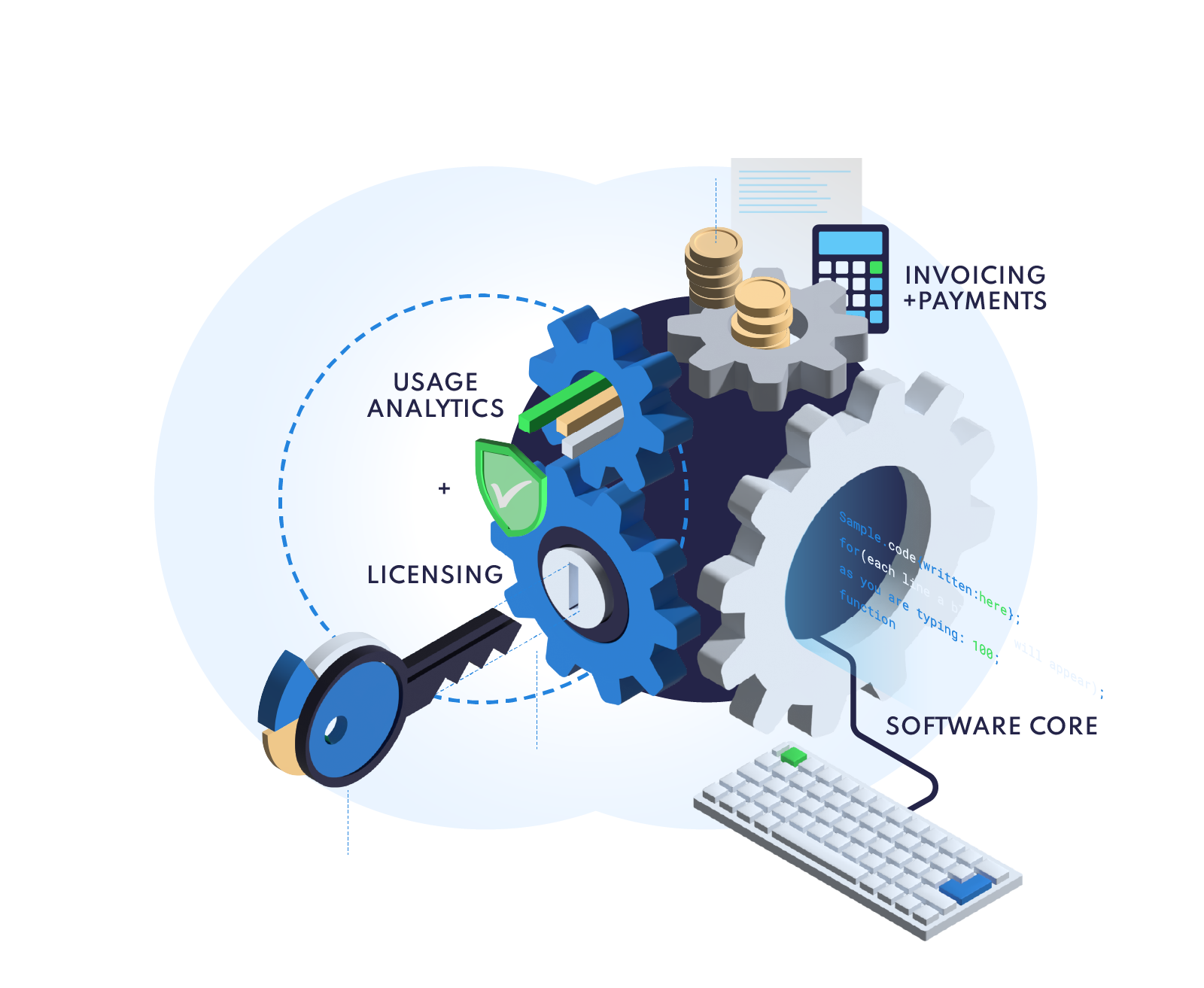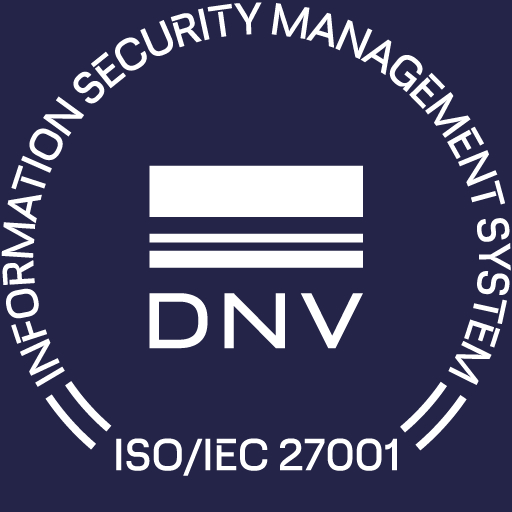In modernen webbasierten SaaS-Anwendungen sind klassische Lizenzaktivierungen überflüssig. Dennoch ist ein leistungsfähiges Lizenz- und Berechtigungsmanagement (Entitlement Management) unerlässlich, um Funktionen gezielt freizuschalten, Abonnement-Stufen zu steuern und flexible Monetarisierungsstrategien umzusetzen.
ZENTRALES ENTITLEMENT-MANAGEMENT: EIN MUSS FÜR JEDES SOFTWARE-DESIGN
Ein dediziertes, gut strukturiertes Entitlement-System ist nicht nur Best Practice – es ist die Grundlage für langfristige Skalierbarkeit und Flexibilität. Durch die Entkopplung von Lizenzierung und Kernanwendungslogik können Preis- und Abonnementmodelle unabhängig vom Produktcode weiterentwickelt werden.
Dieses Konzept gilt nicht nur für SaaS, sondern ebenso für traditionelle Desktop-Software, IoT-Geräte und cloud-native Multi-Tenant-Plattformen. Unabhängig von der Implementierung gilt:
Jede Softwareinstanz – sei es ein Mandant, Gerät oder Benutzer – muss letztlich mit einem aktiven Nutzungsrecht (z. B. Abonnement, Vertrag oder Servicevereinbarung) verknüpft sein.
Fehlt diese Verbindung, kann dies zu erhöhtem Betriebsaufwand, Compliance-Problemen und potenziellen Umsatzeinbußen führen, insbesondere bei wachsender Systemkomplexität und Kundenbasis.
MANDANTEN-ONBOARDING MIT DIREKTER ENTITLEMENT-ZUORDNUNG
Für Multi-Tenant-SaaS-Anwendungen sollte das Entitlement-Management eng in den Onboarding-Prozess integriert sein. Es ist ein fundamentaler Schritt, um sicherzustellen, dass jeder Mandant innerhalb seiner erlaubten Nutzung und Funktionsgrenzen korrekt funktioniert.
Typische Schritte umfassen:
-
Mandanteninitialisierung: Erstellung eines neuen Mandanten mit einer global eindeutigen Kennung (z. B. tenantId, customerId).
-
Berechtigungsbereitstellung: Direkt nach der Mandantenerstellung wird ein entsprechender Berechtigungseintrag generiert, der den Umfang des Zugriffs definiert – welche Dienste der Mandant nutzen darf, welche Grenzen gelten (z. B. Anzahl der Benutzer, Speicher, API-Aufrufe) und für welchen Zeitraum (z. B. Testversion vs. bezahltes Abonnement).
Durch diese explizite und automatisierte Verknüpfung wird sichergestellt, dass jeder Mandant durch durchsetzbare Richtlinien gemäß Ihrer Produktstrategie und Geschäftsregeln gesteuert wird.

DATENSYNCHRONISATION ZWISCHEN ENTITLEMENT UND BACKEND-SYSTEMEN
Das Entitlement-System muss mit Backend-Systemen wie CRM (z. B. Salesforce, HubSpot), ERP (z. B. SAP, NetSuite) oder Abrechnungsplattformen (z. B. Zuora, Nitrobox) integriert sein. Diese Systeme fungieren als autoritative Quelle für den Kundenstatus – z. B. aktive Abonnements, Verlängerungen, Kündigungen.
Um die Übereinstimmung zu gewährleisten, sollten Berechtigungsdaten über Webhooks, APIs oder geplante Jobs synchronisiert werden. Dies stellt die Echtzeitdurchsetzung von Zugriffsrechten sicher und reduziert Diskrepanzen zwischen kommerziellen Vereinbarungen und dem Laufzeitverhalten.
Produktivsysteme: Wenn ein Kunde ein Abonnement kauft, aktualisiert oder herabstuft – sei es über ein Self-Service-Portal oder einen manuellen Prozess – wird das Ereignis typischerweise zuerst im Abrechnungssystem erfasst. Das Entitlement-System sollte dann entsprechend aktualisiert werden, idealerweise über eine ereignisgesteuerte Integration in Echtzeit.
Testversionen: In diesem Szenario ist die Reihenfolge der Ereignisse leicht unterschiedlich. Da noch kein gültiges Abonnement oder Vertrag besteht, wird die Mandanteninitialisierung nicht durch eine „Zahlung“ ausgelöst, sondern durch reines Interesse. Das Entitlement-System stellt sicher, dass Interessenten zeitlich begrenzten Zugriff erhalten, z. B. für 30 Tage. Sobald der Interessent zum Kunden wird, wird das CRM- oder Abrechnungssystem benachrichtigt.
KONFIGURIEREN STATT CODIEREN: ENTITLEMENTS ALS STEUERUNGSELEMENT
Der wahre Wert eines zentralisierten Entitlement- und Lizenzsystems zeigt sich, wenn Produktänderungen erforderlich sind – ein häufiges Szenario für Produktmanager. Mit einer gut strukturierten Entitlement-Management-Schicht können Sie schnell Anpassungen vornehmen, ohne den Kernanwendungscode zu ändern:
-
Neue Funktion hinzufügen? Aktualisieren Sie einfach die Entitlement-Konfiguration, um sie in die entsprechenden Pläne aufzunehmen.
-
Preise ändern? Passen Sie das Preismodell in Ihrem Abonnement- oder Abrechnungssystem an – keine Codeänderungen erforderlich.
-
Neues Paket oder Edition einführen? Definieren Sie ein neues Entitlement-Profil, das Funktionen, Nutzungslimits und Zugriffskontrollen für das neue Angebot abbildet.
Diese Entkopplung ermöglicht es Teams, Preisstrategien, Funktionsbündel und Geschäftsmodelle schnell zu iterieren – ohne den Aufwand von Release-Zyklen oder Codebereitstellungen.
FAZIT
In einer Welt, die sich in Richtung dynamischer Bereitstellung, nutzungsbasierter Abrechnung und Zero-Touch-Deployment bewegt, ist eine flexible Softwarelizenzierungslösung nicht mehr optional – insbesondere in Multi-Tenant-SaaS-Umgebungen.
Ob Sie eine kommerzielle Lösung verwenden oder eine eigene Lizenz- und Berechtigungsplattform entwickeln, die Integration der Lizenzierung als erstklassige architektonische Überlegung ermöglicht:
-
Präzise Zugriffskontrolle
-
Echtzeit-Feature-Management
-
Flexible Monetarisierungsstrategien


